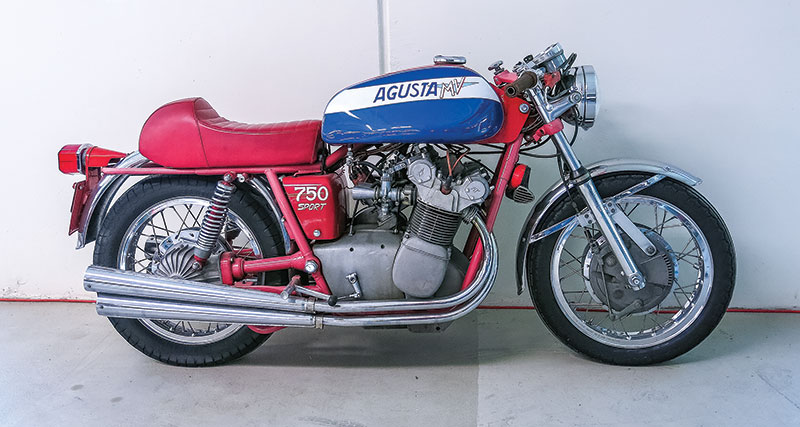
In the best Italian fashion, this machine was the motoring equivalent of Gina Lollobrigida and Sofia Loren—gorgeous and rare. Only about a thousand of the 750S models were made, and they went for a very fancy price when new, now even fancier due to their rarity. They weren’t easy to ride, having tall gearing and suspension set more for the smoothness of a racetrack rather than an ordinary road, but the look and sound made these minor sticklers ignorable. The pleasure derived from such a machine was not objective, but visceral.
Before World War II, the Agusta family was manufacturing aircraft, and making a lot of money. But in 1945, the winning side of that little war told Domenico Agusta to stop building the flying machines until further notice. Being a good businessman, with lots of good workers on hand that he wanted to keep employed, he began making buses and boats in the old airplane works. He also decided to get into the private transportation market, namely small motorcycles, calling the production facility Meccanica Verghera (MV—get it?), Verghera being a neighborhood in the city of Gallarate, northwest of Milan.
To advertise the business, he set out to win races. In 1948, his 125cc two-stroke won the Italian Grand Prix, and MV Agusta was on its way. The company slogan became “Racing experience at the service of mass production”—it does sound better in Italian. Taking the racing very seriously, Domenico hired a leading engineer, Piero Remor, who had built a successful four-cylinder 500cc Grand Prix racer for the Gilera company before the war. And in 1950, MV Agusta had an unsurprisingly similar machine—with four speeds and a shaft drive. A prototype of a street version was shown at the Milan show that year, though it was never produced.
In 1952, the GP bike got a fifth gear and chain drive, and a new overhead-camshaft MV 125 was road racing’s world champion. With Arturo Magni, another engineer who had worked at Gilera at the helm of the racing department, MV won 75 world championships over the next 25 years, in all classes except sidecar. The 500 came into its own GP championship in 1956, losing to Gilera in 1957, then enjoying 17 consecutive victories.
The sale of a lot of smaller civilian MVs kept the company flush, but sales dropped off after 1960 as Italians traded in their utilitarian motorcycles for Fiat 600 cars. Domenico saw the
future, with motorcycles becoming expensive toys. In 1966, the MV Agusta 600GT appeared, using a mildly expanded and much detuned version of the original 500cc GP motor. The GT had a 58/56mm bore/stroke (592cc), with two Dell’Orto carbs feeding the four cylinders. An electric starter, made by Bosch, was fitted beneath the engine; it also functioned as a generator. Intended as a Grand Touring machine, it had shaft final drive. Unfortunately, the GT had exceptionally unattractive bodywork and was not a success—fewer than 200 were built over the next five years.
Then some bright light realized that the MV name was famous for going fast, not dawdling along in a touristic fashion, and 750cc was the popular size of choice. The factory bored out the engine to 65mm (743cc) and the first 750S appeared in 1970, with stunning bodywork and paint, and for a price that had no match, as the 750S cost roughly three times as much as a Honda CB750. A companion and slightly less expensive 750GT appeared in 1971, the year Domenico died. However, once the potential purchaser had seen the S, nothing else mattered—even if it did have shaft drive. This gave Magni a profitable sideline for some years, as he manufactured a chain-conversion kit which wealthy privateers bought in order to have a go at the track.
The engine was race-tough, with a built-up crank running on no less than six bearings, with balls at each end and rollers for interior support. The wet sump held four quarts of lubricant. Between the center cylinders, gears went up to the camshafts—which had to be removed in order to adjust the valves, two per cylinder. Four 24mm Dell’Orto carbs fed the 9.5:1 compression ratio, and since these carbs had open throats, bellmouths with no cleaners to obstruct the air, riders were advised not to wear loose trousers.
A geared primary drive went back to the wet clutch, then power passed through five gears and out to the back wheel with the driveshaft.
The engine, inclined forward 20 degrees, sat in a tubular steel double-cradle frame with a well-reinforced steering head. Eighteen-inch Borrani alloy wheels were mounted on both ends, a 3.50 (90/90 tire) at the front, 4.00 (100/90) on the rear. The early models had a Grimeca four-shoe, four-cam front brake, which was never overly praised. Ceriani provided the 35mm fork, and competed with Marzocchi to provide the shock absorbers. Wheelbase was a shade less than 57 inches and the weight, with five gallons of gas in the tank, was 555 pounds.
Improvements were made for 1974, with a pair of Scarab disc brakes on the front wheel, bigger 26mm carbs, larger valves and slightly higher compression. Even then, power to the rear wheel was not exceptional, about 70 horses. However, when the starter button was pressed, the audience was transfixed. With straight-cut gears and four very loud exhausts, the racket was phenomenal! Click into first gear, let the clutch out, and from 3,000 to 9,000 rpm oodles of torque could be found. At urban speeds the bike felt heavy, slightly uncomfortable, but out in the countryside—it was a different world. Or so say those who have ridden such a beast.
Note: For 1975 the 750S became the 750S America, so named to meet U.S. standards, like having the shift on the left side. And that is another story.
Also, in March 2016, MV Agusta once again filed the Italian equivalent of Chapter 11 bankruptcy, hoping to resolve some financial problems—even though 25 percent of the company is owned by Mercedes-Benz.

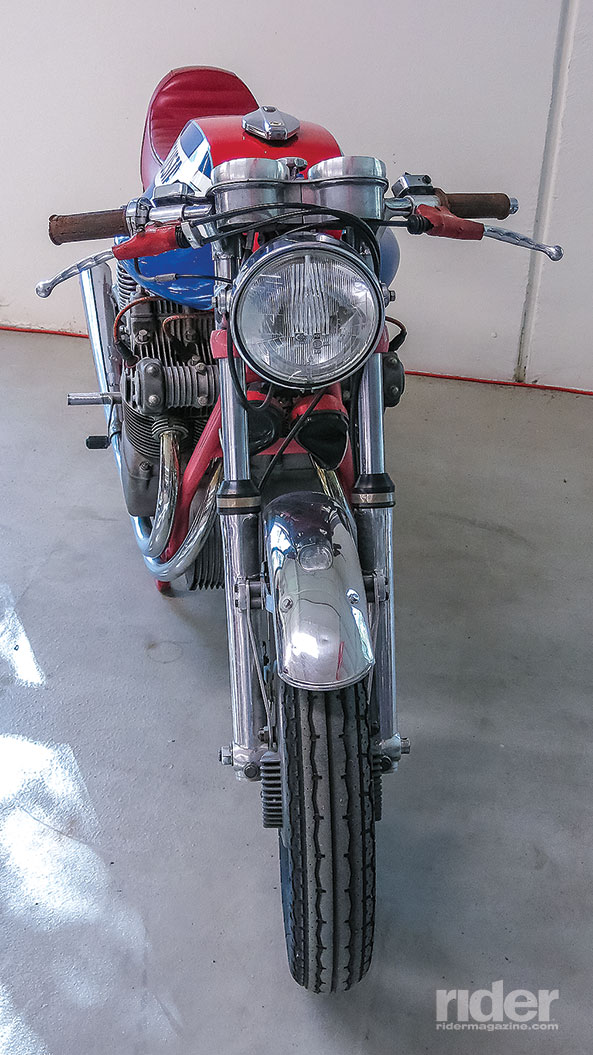
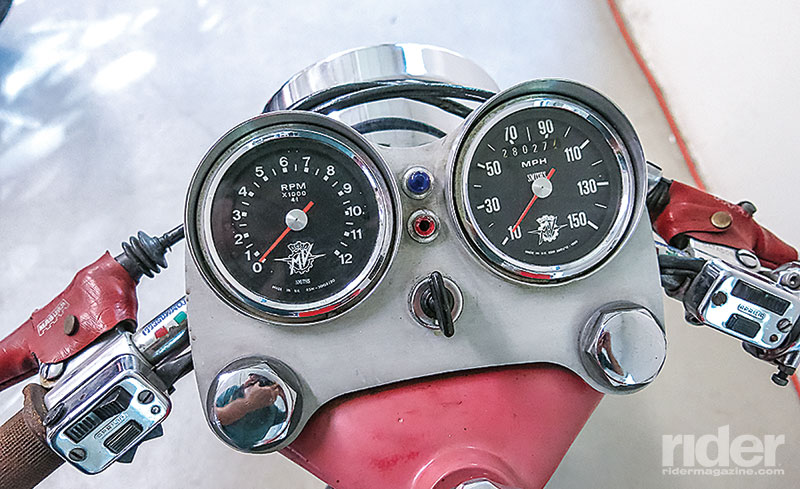
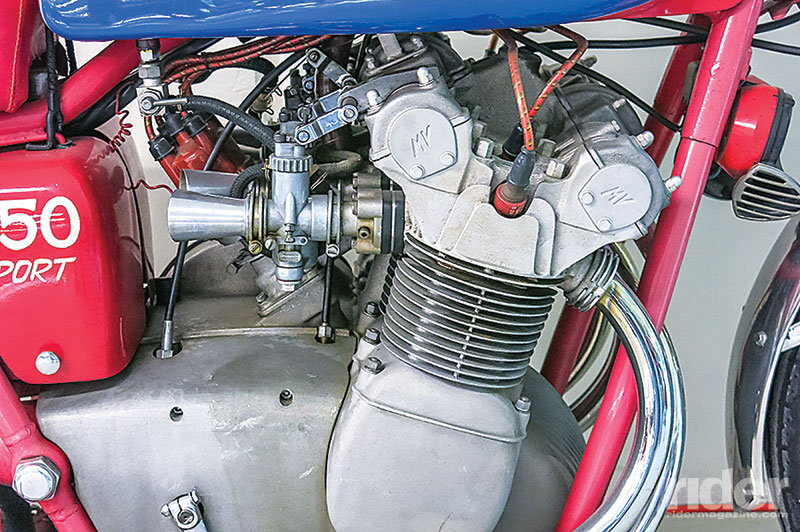
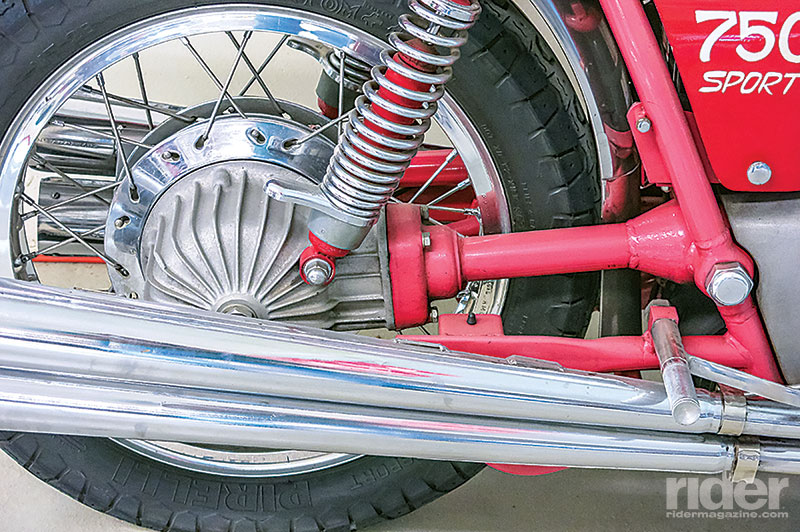
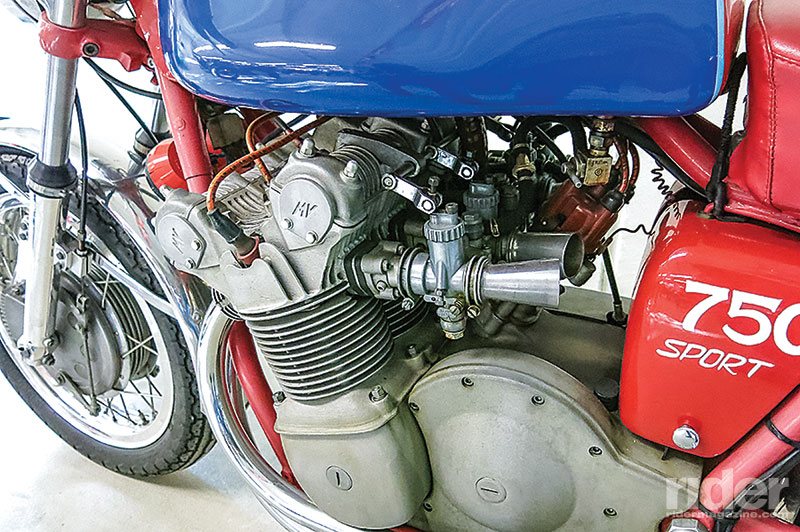
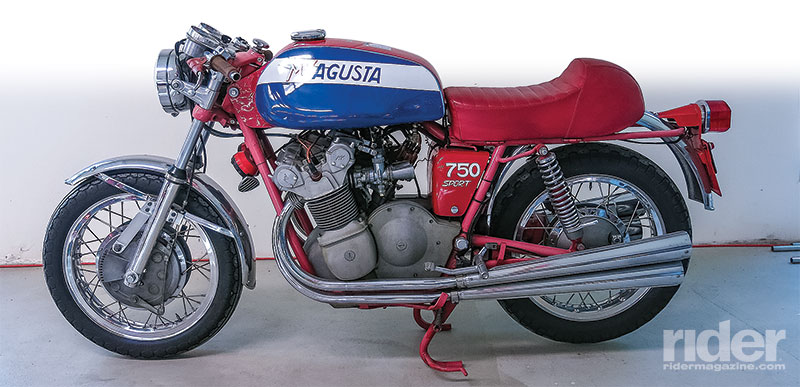
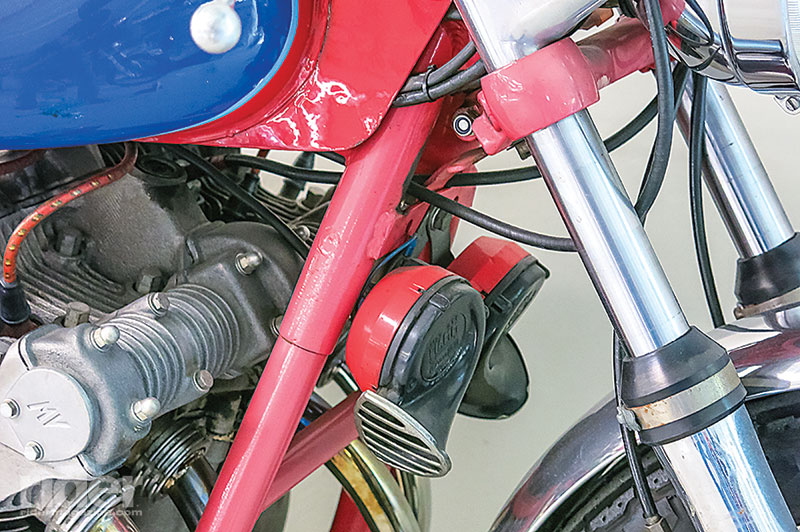
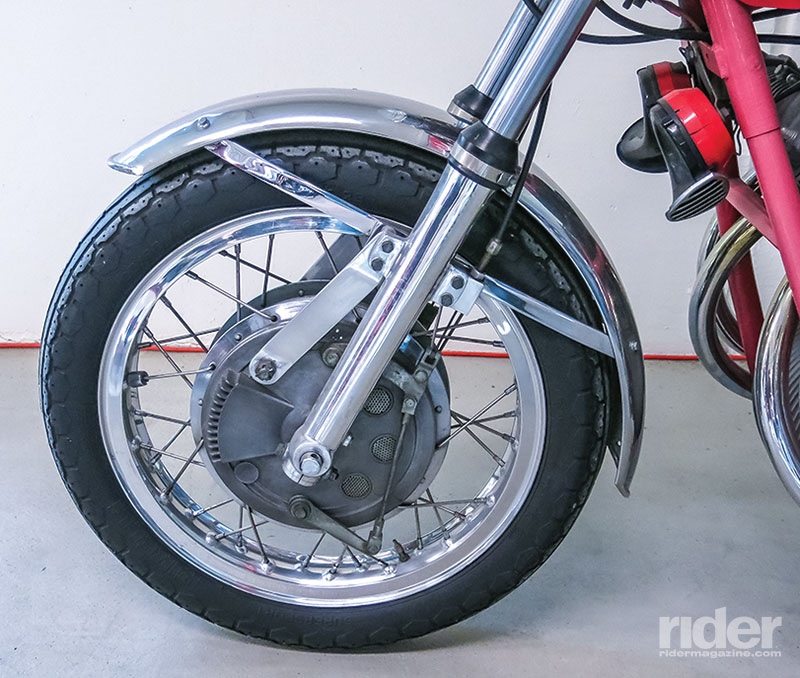







iremember the 750 and a 350 models they brought to Australia to coincide with Giacomo Agostini doing vertually exhibition races out here to promote the sport,and that he did .they were far to expensive for most bikers back then but a few, and I have a suspition John Laws might of been one of them .Not 100% but have a fair idea from the time